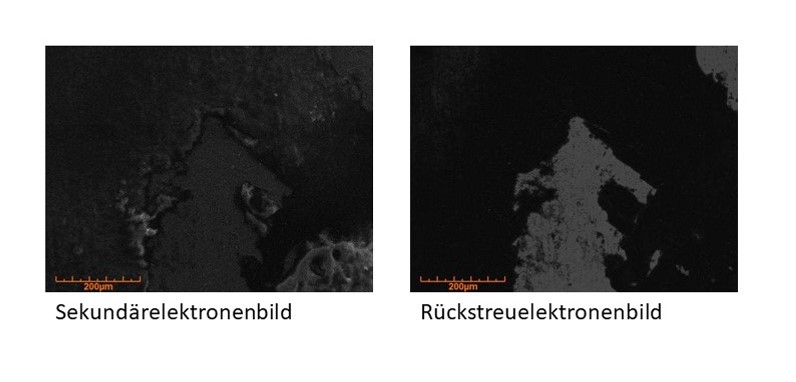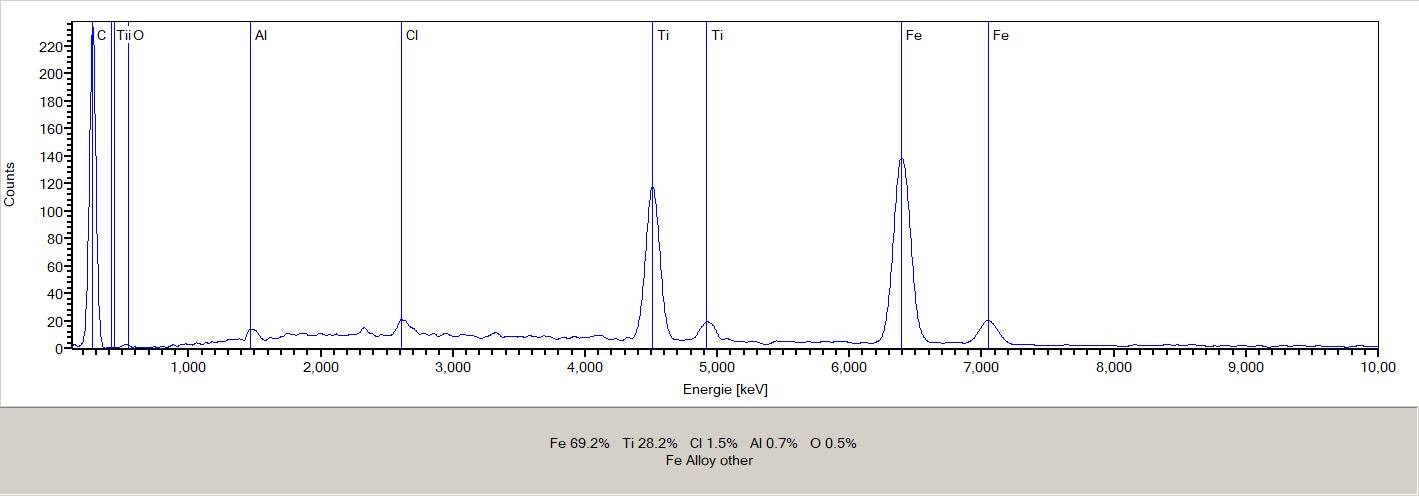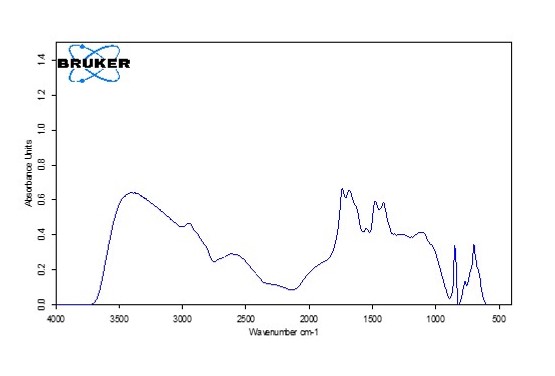Practical example 1
Damage finding: unknown yellow spots on metal component
1. SEM image evaluation:
The secondary electron image of the sample shows an overlying contamination with a soft appearing structure.
The backscattered electron image clearly shows that the impurity has a lower density than the metal component. Thus, image evaluation of the SEM images allows to conclude that an organic contamination is present.
2. EDX Spectral evaluation
The EDX spectrum shows an intense carbon peak. Although this cannot be evaluated quantitatively, the results of the image evaluation confirm that it is an organic, carbon-based contamination.
Furthermore, large amounts of titanium and oxygen are shown. Titanium dioxide is often used as a pigment in paints. The iron found can be assigned to the component
REM image evaluation and EDX spectrum indicate a coating, but cannot yet prove this conclusively.
3. IR spectral evaluation
The spectrum cannot be assigned to a single connection without reasonable doubt. Nevertheless, the spectrum allows the conclusion that it is an acrylic-based formulation. Polyacrylates are often used as binders in paints (acrylic paint).
Conclusion:
In the combination of polyacrylate, titanium dioxide and the yellow colour, it can be said almost beyond doubt that the contamination on the component is a spattering of an acrylic paint.
Newsletter registration



